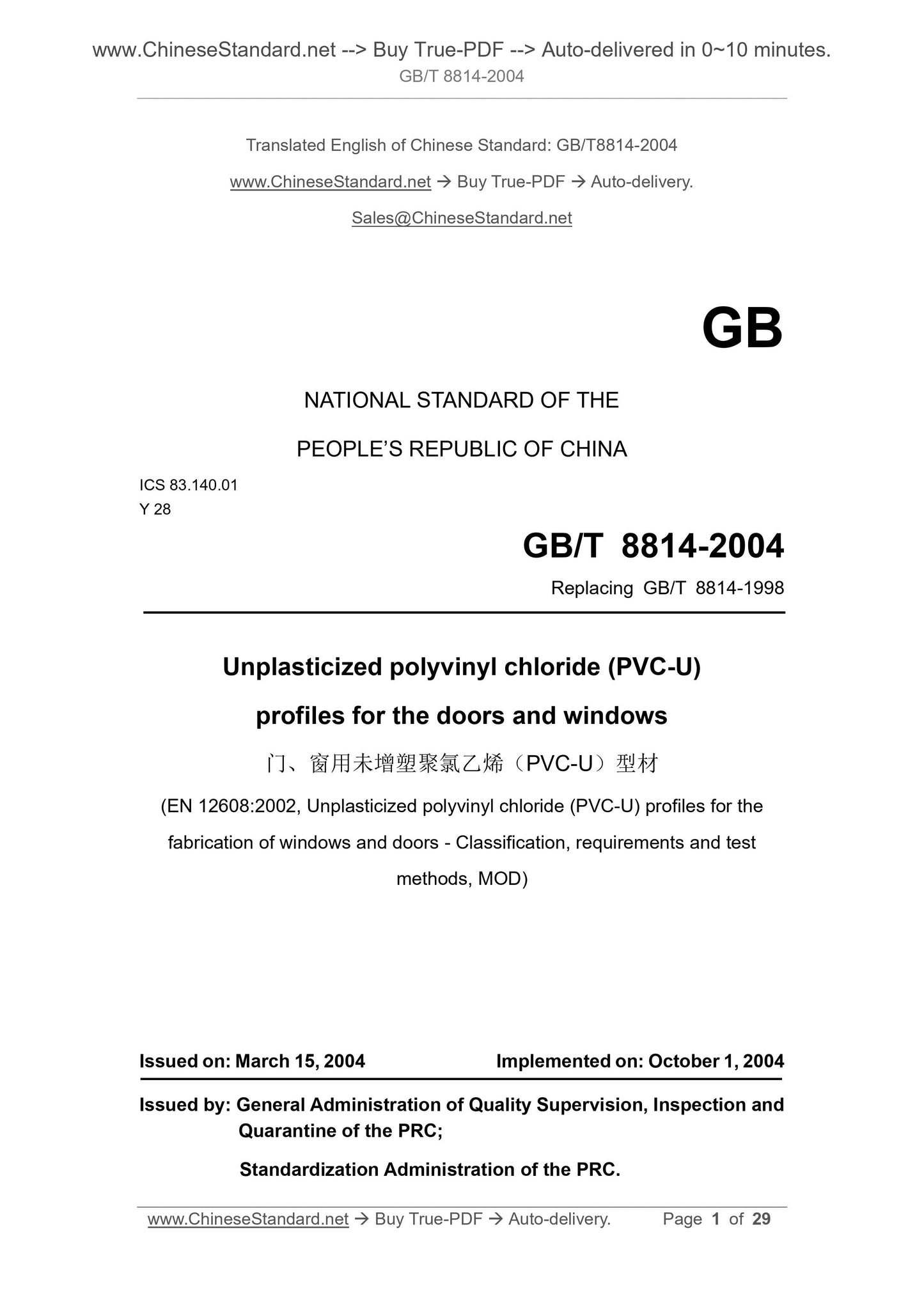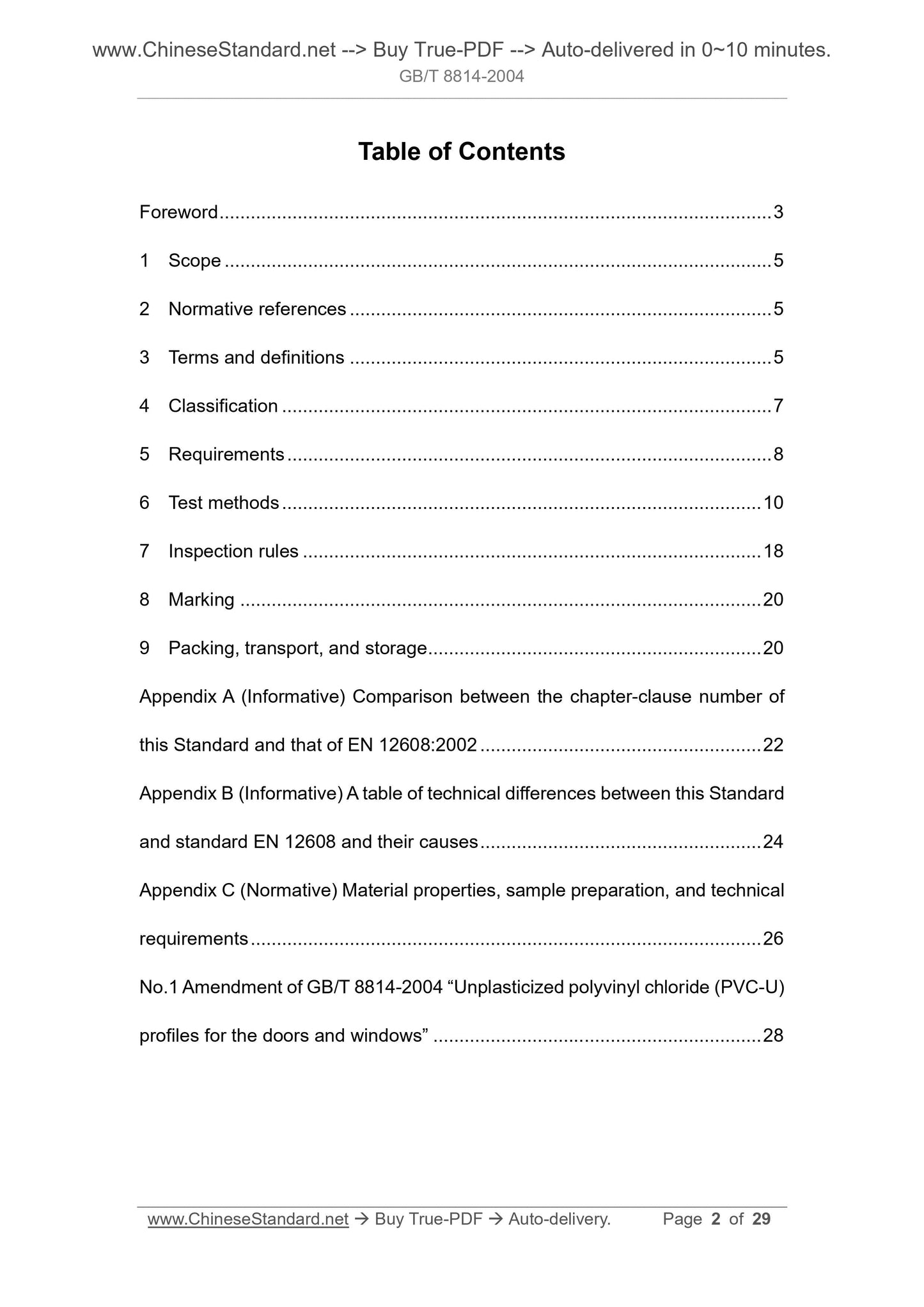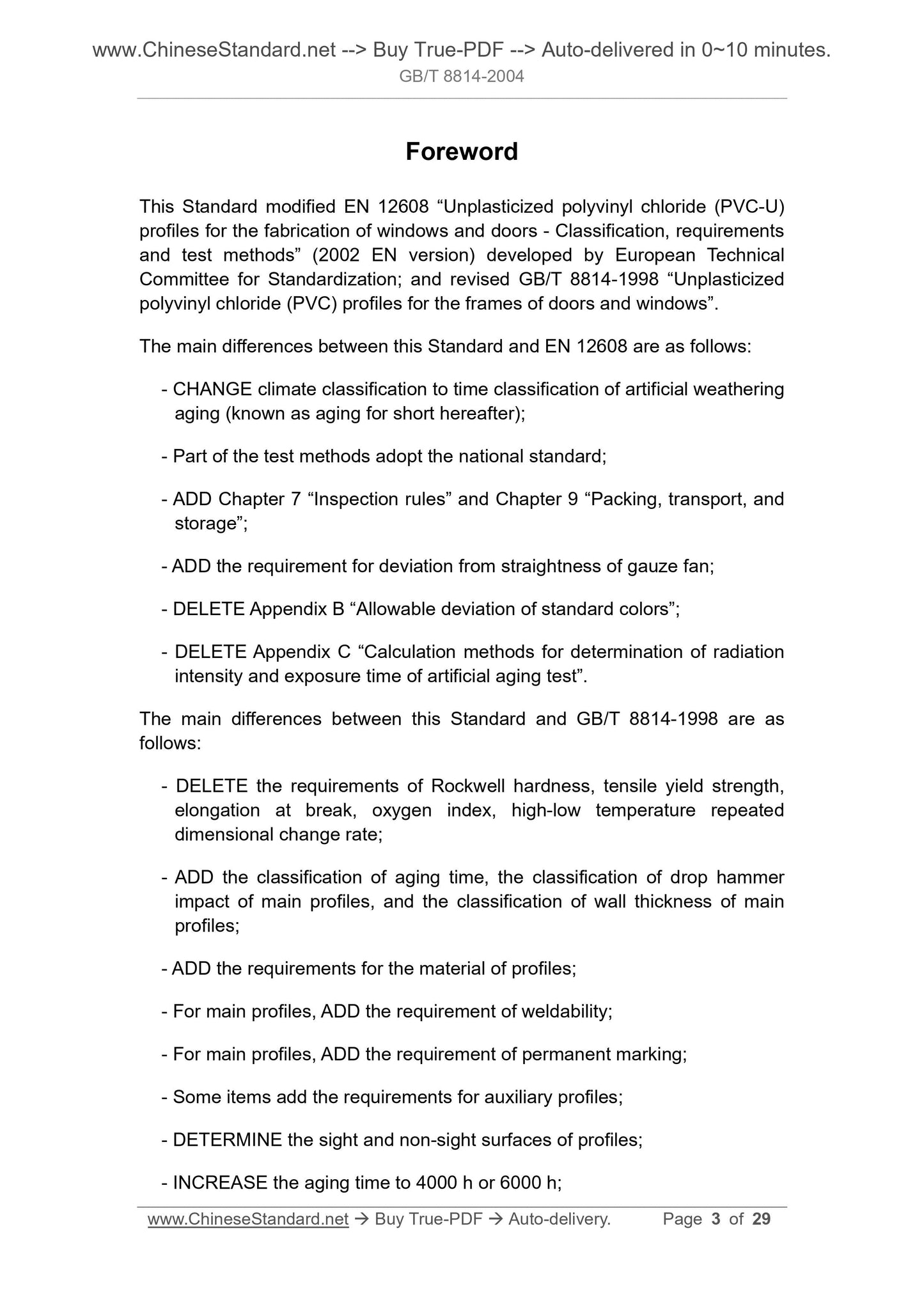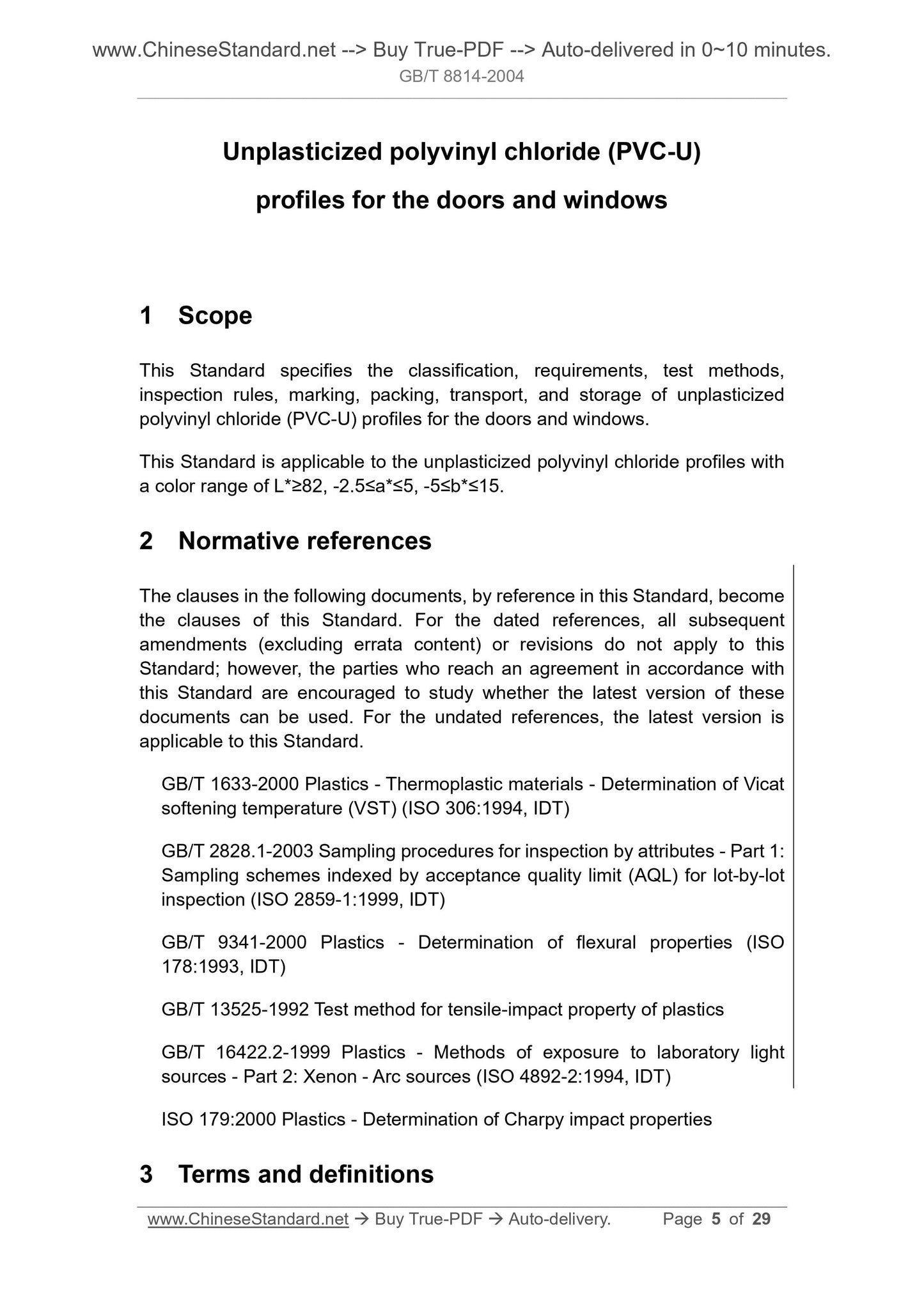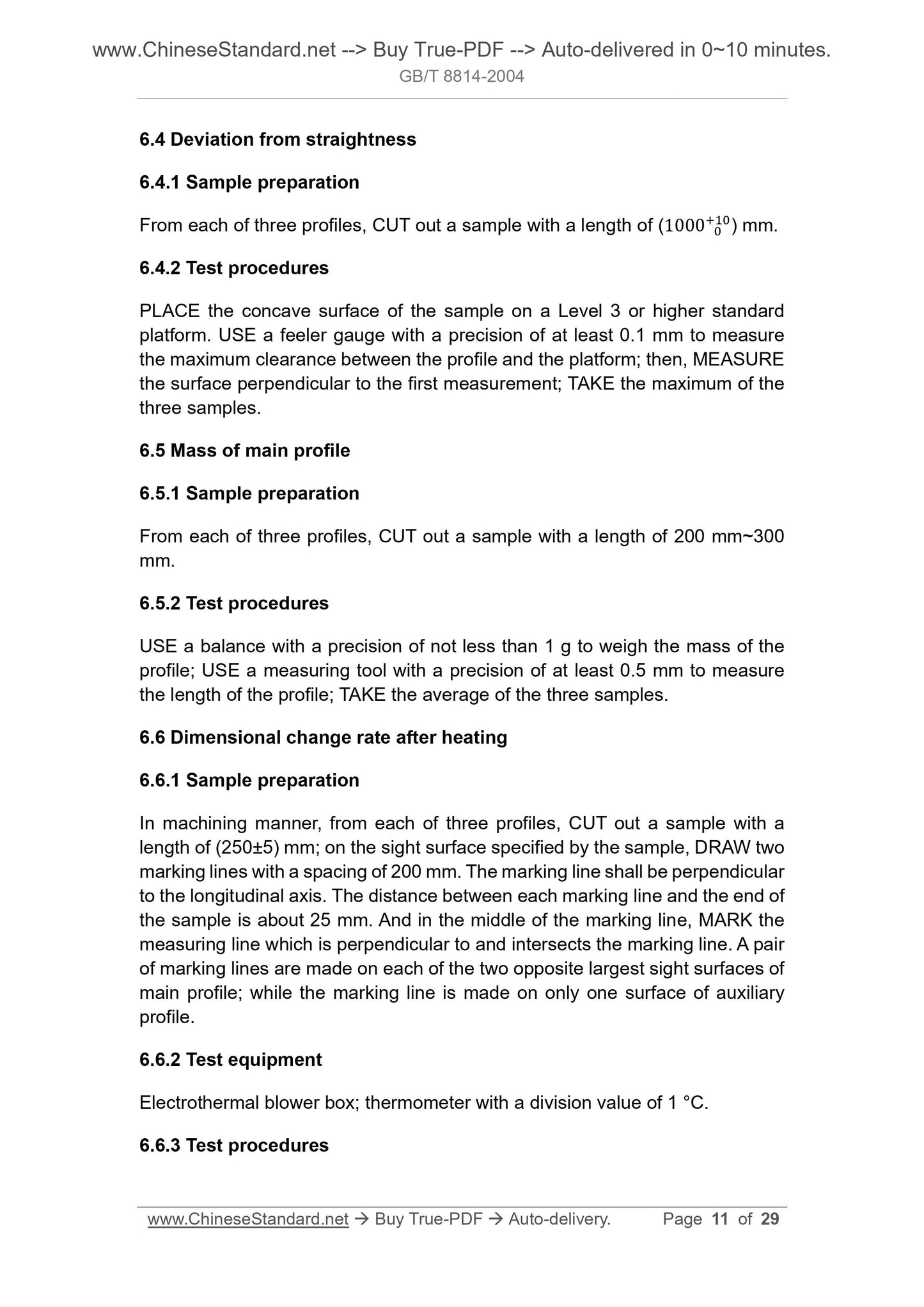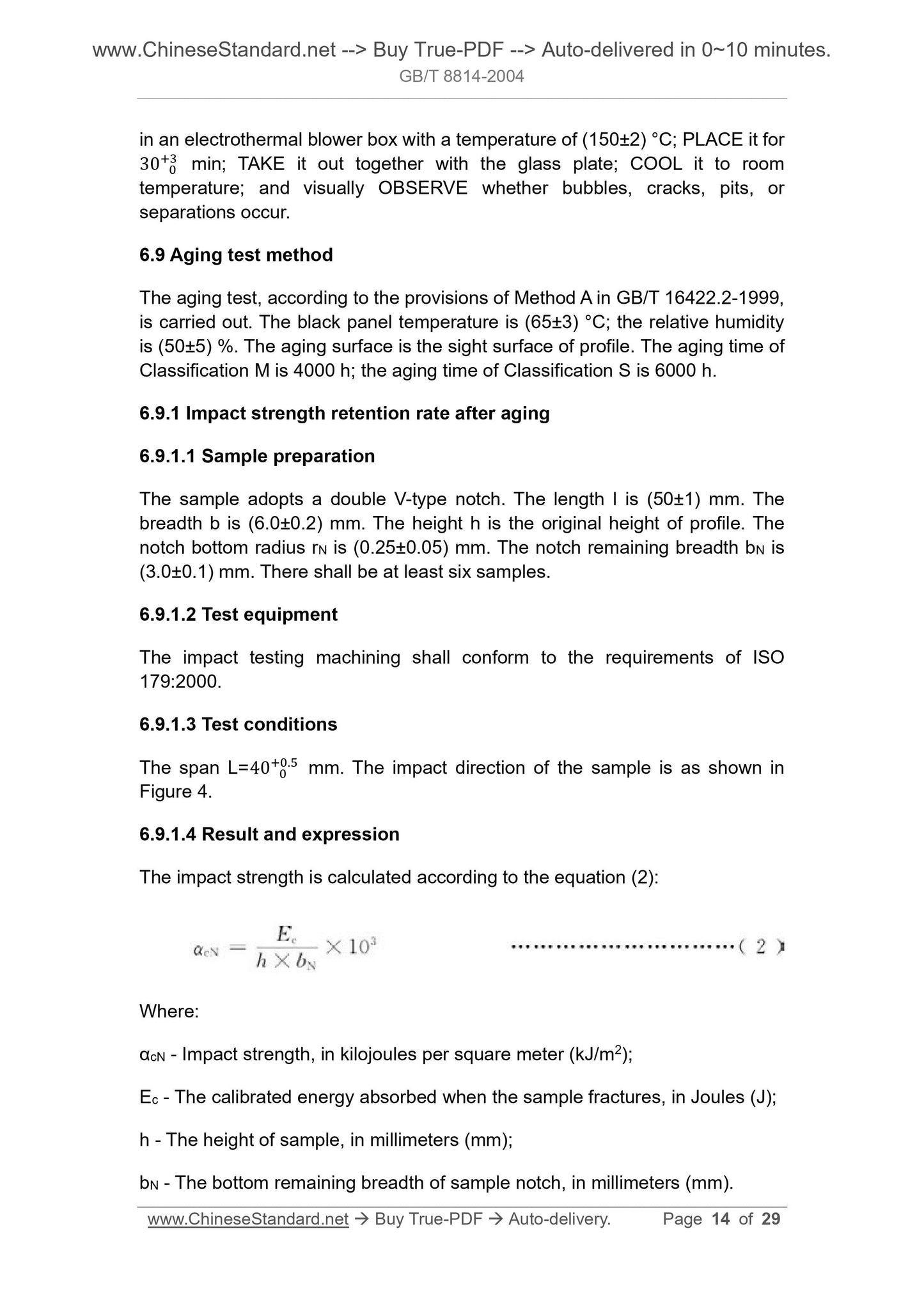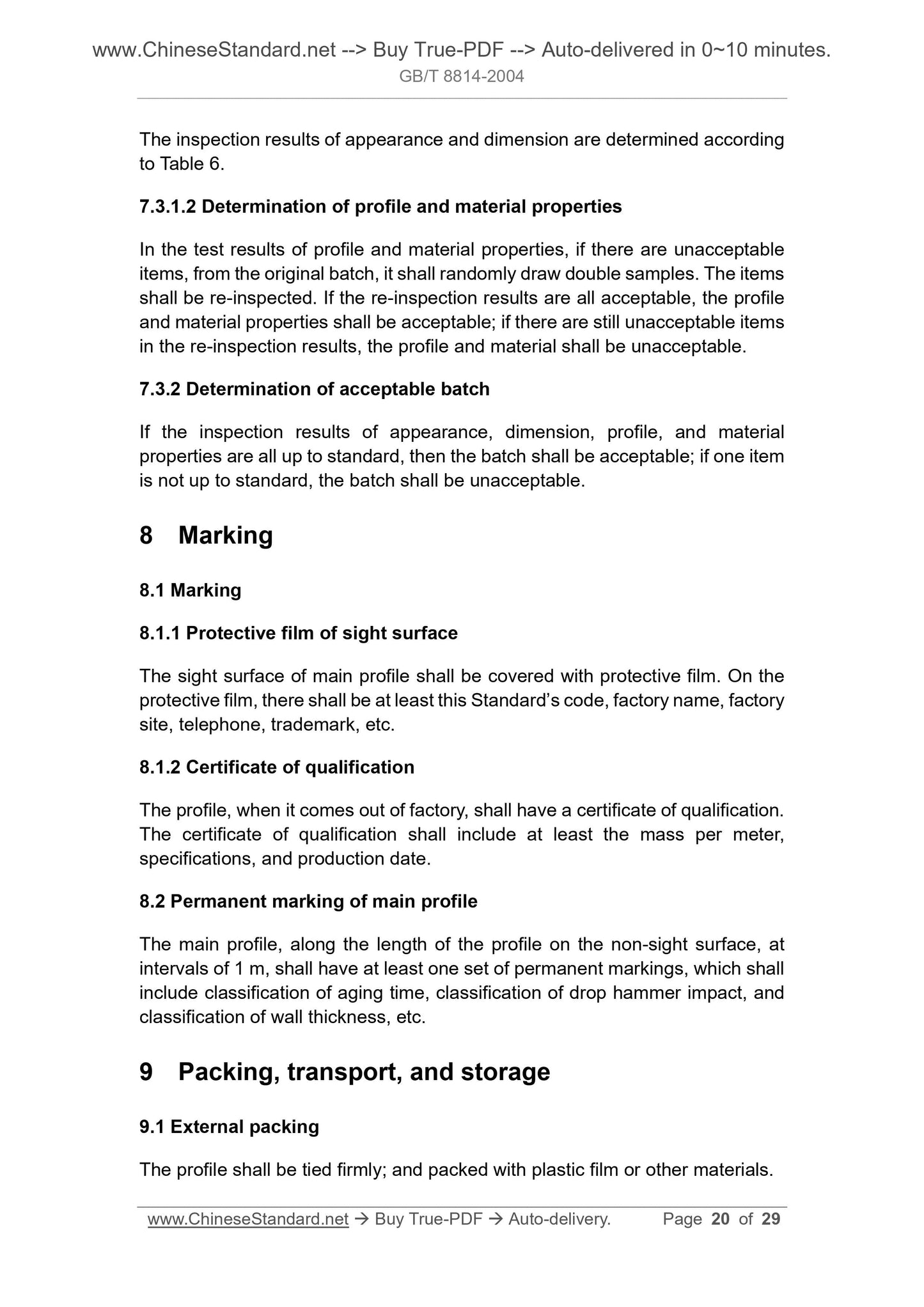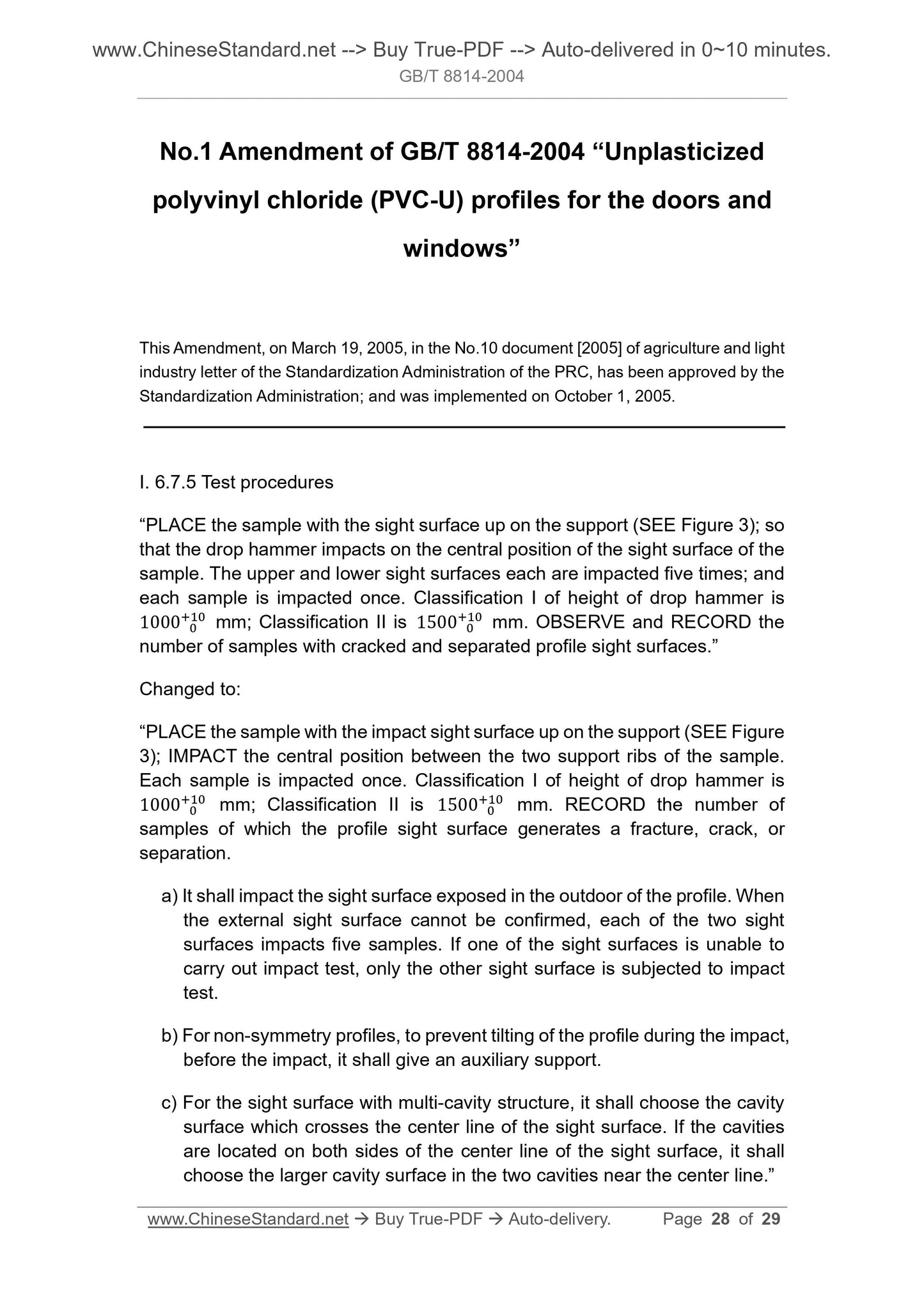1
/
of
8
PayPal, credit cards. Download editable-PDF and invoice in 1 second!
GB/T 8814-2004 English PDF (GB/T8814-2004)
GB/T 8814-2004 English PDF (GB/T8814-2004)
Regular price
$85.00
Regular price
Sale price
$85.00
Unit price
/
per
Shipping calculated at checkout.
Couldn't load pickup availability
GB/T 8814-2004: Unplasticized polyvinyl chloride (PVC-U) profiles for the doors and windows
Delivery: 9 seconds. Download (and Email) true-PDF + Invoice.Get Quotation: Click GB/T 8814-2004 (Self-service in 1-minute)
Newer / historical versions: GB/T 8814-2004
Preview True-PDF
Scope
This Standard specifies the classification, requirements, test methods,inspection rules, marking, packing, transport, and storage of unplasticized
polyvinyl chloride (PVC-U) profiles for the doors and windows.
This Standard is applicable to the unplasticized polyvinyl chloride profiles with
a color range of L*≥82, -2.5≤a*≤5, -5≤b*≤15.
Basic Data
| Standard ID | GB/T 8814-2004 (GB/T8814-2004) |
| Description (Translated English) | Unplasticized polyvinyl chloride (PVC-U) profiles for the doors and windors |
| Sector / Industry | National Standard (Recommended) |
| Classification of Chinese Standard | Y28 |
| Classification of International Standard | 83.140.01 |
| Word Count Estimation | 19,130 |
| Date of Issue | 2004-03-15 |
| Date of Implementation | 2004-10-01 |
| Older Standard (superseded by this standard) | GB/T 8814-1998 |
| Quoted Standard | GB/T 1633-2000; GB/T 2828.1-2003; GB/T 9341-2000; GB/T 13525-1992; GB/T 16422.2-1999; ISO 179-2000 |
| Adopted Standard | EN 12608-2002; MOD |
| Regulation (derived from) | Announcement of Newly Approved National Standards No. 4 of 2004 (No. 66 overall) |
| Issuing agency(ies) | General Administration of Quality Supervision, Inspection and Quarantine of the People Republic of China, China National Standardization Administration Committee |
| Summary | This standard specifies: the doors and windows of unplasticized polyvinyl chloride (PVC-U) profiles Classification, requirements, test methods, inspection rules, marking, packaging, transport and storage. This standard applies to: the color range in L, �� 82, -2. 5 �� a"�� 5, -5 �� b"�� 15 unplasticized PVC profiles. |
Share
